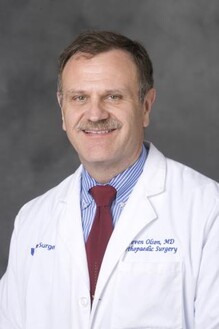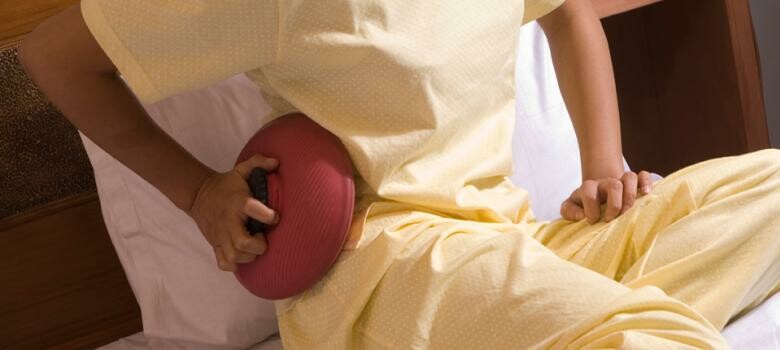 From the DukeHealth.org archives. Content may be out of date.
From the DukeHealth.org archives. Content may be out of date.
Hip Preservation Surgery at Duke Health Puts Young Cadet One Step Closer to Her Dream
Periacetabular Osteotomy (PAO) Restores Mobility and Eliminates Pain

After a day of building a school with her Army unit in Guatemala, 18-year-old Madison Culler was not just tired -- she was also in pain. She didn’t know it yet, but a combination of repetitive movements, physical strain, and an underlying hip condition had torn the cartilage in her right hip. She tried rest and physical therapy, but they didn’t help. Then her physical therapist recommended she learn more about hip preservation surgery at Duke Health. Less than a year after surgery, the college student and ROTC cadet passed her Army physical exams and is back to training with her unit.
An Injury That Changed Everything
Culler has always been active and ambitious. In high school, she was a kicker for the varsity football team, played soccer and basketball, and ran track. She also joined the Army. Her hip injury in the summer of 2019 changed everything. “I couldn't do what I wanted to do. I couldn't even walk without pain. Getting around campus was hard, and I relied on crutches,” Culler said.
Eager to get back to her normal life, Culler sought help from a physical therapist near her college in Boone, NC. After four months of physical therapy sessions with no improvement, her therapist recommended that she see Steven A. Olson, MD, an orthopaedic surgeon and hip specialist at Duke Health.
An Alternative to Hip Replacement
Dr. Olson diagnosed Culler not only with torn cartilage in her hip -- called a labral tear -- but also hip dysplasia, a condition she was born with. Hip dysplasia occurs when the ball at the top of the thigh bone does not properly fit in the hip socket. According to Dr. Olson, the dysplasia put her at risk for injuries like her labral tear and would eventually lead to hip arthritis if not corrected.
Hip replacement surgery was one option for treating Culler’s condition, but an artificial hip may only last 15 to 20 years. Because Culler was just 19 years old at the time, Dr. Olson recommended a periacetabular osteotomy (PAO) -- also called hip preservation surgery, which would preserve Culler’s hip and correct her dysplasia, and a hip arthroscopy to repair her labrum. According to Dr. Olson, because her torn labrum was a direct result of underlying hip dysplasia, simply repairing the tear was not a good approach.
A Better Surgical Experience
Dr. Olson is one of a handful or surgeons in the Southeast who performs hip arthroscopy at the same time as PAO. “There are centers where a sports surgeon performs the arthroscopy, followed by an orthopaedic surgeon to do the hip preservation. Sometimes patients wait days between procedures. At Duke we have surgeons who can perform both procedures at the same time,” he said.
Duke hip surgeons also use a system called postless distraction. Traditionally in hip arthroscopy, a large foam post is placed between the patient’s legs to decrease the amount of pressure on the hip. This can result in temporary but painful problems including groin swelling and sensitivity. With postless distraction, the patient lies on a soft foam pad, which keeps them in place so the post is not required, explained Dr. Olson. This leads to fewer complications and increases patient comfort after surgery.
Steady Progress After Surgery
In July of 2020 Dr. Olson and his team performed Culler’s surgery, and several days later she returned to her parents’ home in Mebane, NC, where she took her college classes online and started her recovery. “When I first got home, it was really hard -- it took me 45 minutes to even get inside, but after a month or two, I was more independent.” She returned to campus the next semester and continued to make steady progress.
As Active as She Wants to Be
Today she is completely healed, said Dr. Olson. “The advantage of PAO, unlike a total hip replacement, is that it's her joint. She doesn’t have to worry about it loosening or wearing out. She can do whatever she wants to do and be as active as she wants to be.” And that’s exactly what Culler is doing. After passing her required Army physical tests, she is once again training with her ROTC and Army Reserve units and is back to running. She is working to achieve her ultimate goal -- at least 20 years of active duty, with hopes of becoming an officer.
Although recovery took patience, Culler is thrilled with the results. “I'm definitely glad I had the surgery because without it, I wouldn't be where I am right now. I am just so thankful for Dr. Olson and his team.”



